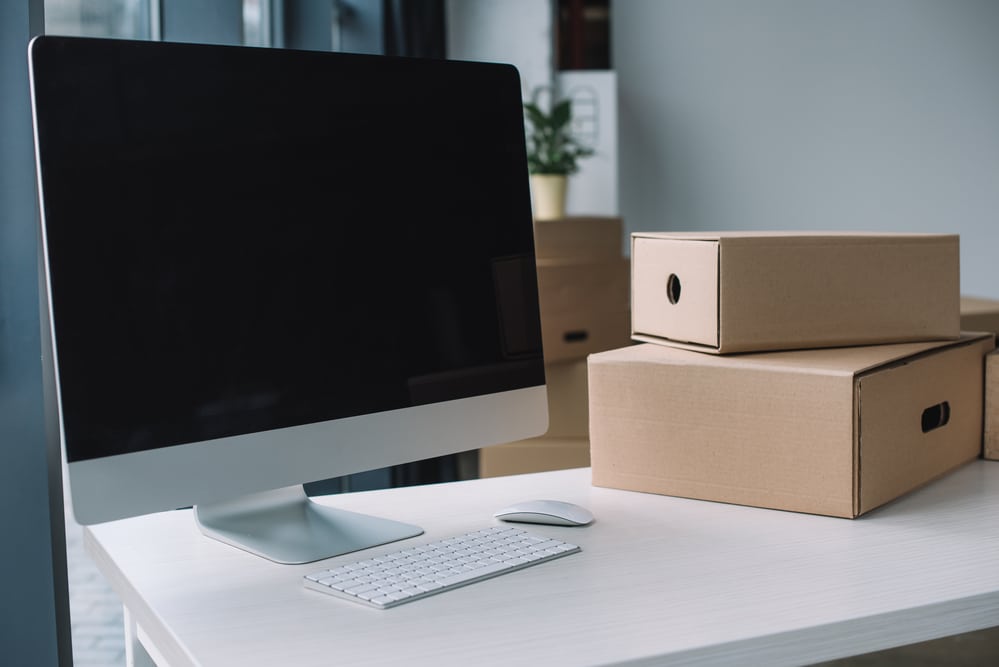

Shipping the latest and greatest electronics can be a great way to stay plugged in wherever you go. Maybe you’d like to send your friend a Nintendo Switch. Maybe you’d like to send an old laptop across the country. Whatever the case, sending electronics isn’t as straightforward as sticking your items in a box and heading off to your local Post Office or UPS Store. There are certain guidelines you’ll have to follow and services you’ll be restricted to, depending on the state of your items. This guide will run you through the basics of shipping electronics, and how to do it correctly!
Table of Contents
- Are Your Brand-New Electronics in Unopening Packaging or Are Your Items Used?
- Package Your Electronic Items Thoughtfully
- Research the Applicable Insurance Coverage for Sending Electronic Items
- Use Online Shipping Software to Ship Electronics for Less
Are Your Brand-New Electronics in Unopened Packaging or Are Your Items Used?
When it comes to shipping electronics, the most important thing to consider is the state of the items you’re sending. For instance, is your item brand-new and in its unopened manufacturer’s packaging? Is your item used and are you providing your own packaging? Or, is the item unused but its manufacturer’s packaging has been opened?
All of this matters because the state of your item will determine the type of shipping service you’ll be allowed to use. For instance, you can use air-based services (such as Priority Mail or UPS Next Day Air) to send electronics powered by lithium-ion batteries if—and only if—the item is brand-new and still contained in its manufacturer’s packaging.
In the case of lithium-ion batteries, carriers prefer used electronics and electronics with opened manufacturer’s packaging to be sent via surface transportation, or ground service. Even if the electronics haven’t been used, if the packaging is open, carriers like USPS and UPS will still require you to ship them via ground transportation!
Examples of ground-based services include USPS Ground Advantage and UPS Ground. Learn more about the differences between USPS Ground Advantage and UPS Ground.
Package Your Electronic Items Thoughtfully
No matter if you use an air-based or ground-based shipping service, you’ll need to package your electronics carefully and with ample protection. However, with super sturdy electronics, you won’t need to sweat too much about packaging them up a ton. Some basic padding and a sturdy box will do the trick. Other electronics may be quite fragile and will require extra attention. Don’t skimp on packaging in these cases! You’ll want to take as many pre-shipment precautions as you can to protect your items so they don’t take damage during transit.
The Basic steps for Packaging Electronics
- Start by separating the item into different pieces: bag any cords, chargers, adaptors, and all the extra stuff. Detach any extra pieces on the main equipment and package them separately, if possible.
- Once you’ve taken your item apart, carefully wrap each piece and add protective layers of bubble wrap to anything fragile. Consider popping each piece into a waterproof bag if you’re concerned about weather damage to your items.
- Pack each item into a box snugly with at least 2-3 inches of padding around the most fragile pieces.
- Seal up your box with good tape. Once it’s packed, give it a good shake to make sure that nothing shifts around! This will ensure that the items will go through transit with a much lower risk of damage to each part.
In any case, always opt for the right kinds of packing material. In our experience, materials such as air bags, bubble wrap, and scrunched kraft paper will provide much better padding than packing peanuts! Peanuts won’t protect as well against damage during transit for heavier items.
Pro Tip: You might also want to consider purchasing custom packaging to ensure that your electronic items arrive unharmed. If you have the original packaging from when the item was first purchased, this will also do the trick! You can just slap the label on the outside of this box if you don’t want to drop money on the external packaging.
Research the Applicable Insurance Coverage for Sending Electronic Items
You’ll always want to add insurance onto these shipments to cover yourself against any damage that may occur in transit. Before shipping your electronics, do some research to ensure that the insurance you’re using includes the items you’re shipping! If the insurance company excludes the items from coverage, there’s no use in spending the extra money to cover your shipment.
Here are some of the things that shipping insurance companies typically won’t cover:
- LCD monitors or screens
- Televisions
- Laptop computers (including tablets, iPads, etc.) without Signature Confirmation
- Mobile telephones without Signature Confirmation
Taking photos of your item pre-shipment will also work in your favor, should you need to file a damage claim. This will help the insurance company determine the loss of value and repair estimates quickly. If possible, snap a few pictures of the items you’re shipping before you get packing.
Pro Tip: Dig into the terms and conditions of your insurance company to ensure that the items you’re shipping are included in the coverage plan! If the insurance company won’t cover them in the first place, then purchasing extra coverage won’t do you any good, anyway. You’ll just have to cross your fingers and hope for the best!
Use Online Shipping Software to Ship Electronics for Less
Now that we’ve gone over packing your electronics properly, let’s talk about the cheapest ways to ship. Generally speaking, Priority Mail services will likely be the best way to ship your electronics. Depending on the size and weight of your shipment, either weight-based Priority Mail or Priority Mail Cubic will be the way to go! USPS also includes $100 of insurance in Priority Mail shipments, so check that out as well to see if your item will be covered by those services before you add on additional insurance.
Shipping electronics super safely can definitely be expensive, given the amount of time, energy, packaging, and postage that you’ll invest in your shipment. You’ll definitely want to save as much cash as you can, so using online shipping software will be the way to go as you ship your items out.
Buying postage online with shipping software doesn’t just allow you to access the deepest commercial discounts available through USPS. It will also let you add on special services like Signature Confirmation and third-party insurance from the comfort of your home. That way, you can keep these valuable items in your possession for as long as possible, right up until the point when you hand the shipment over to USPS. Easy peasy, right?
You’ve got this!
As long as you plan ahead, carefully package your items, and cover yourself against any damages or losses that might occur during transit, you’ll be all set with your shipments! Online postage is just the cherry on top that will keep a little more money in your pocket. You’re ready to ship from there, so grab your bubble wrap and get going!


Moni
Please, i’m not finding on the USPS website whether or not if they cover ipad with insurance! Can you tell me which insurance covers this type of electronics?
HP
Hi Moni! I was just looking at this article and saw your comment – while I’m not sure if USPS would cover it, I know Shipsurance will cover ipads as long as they’re properly packaged and have signature confirmation added on!